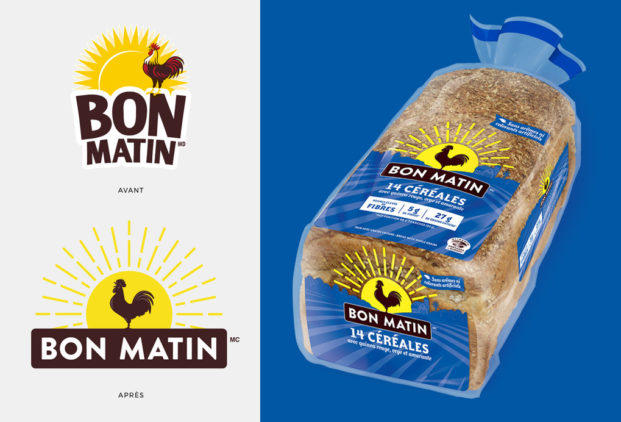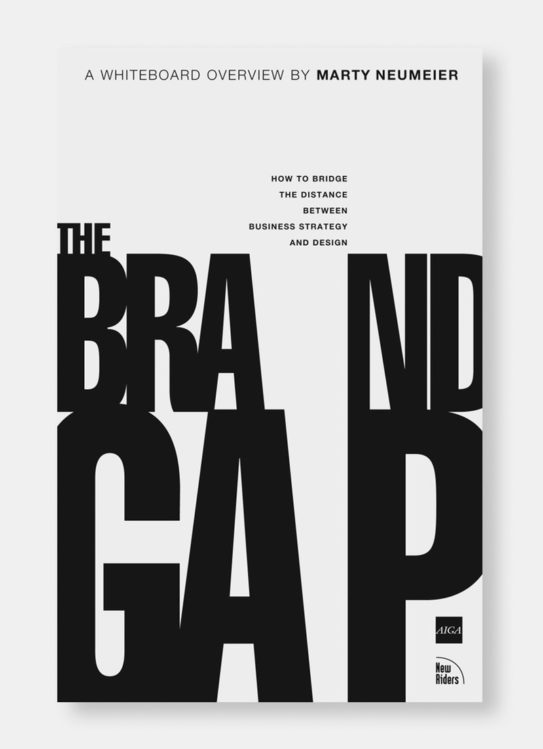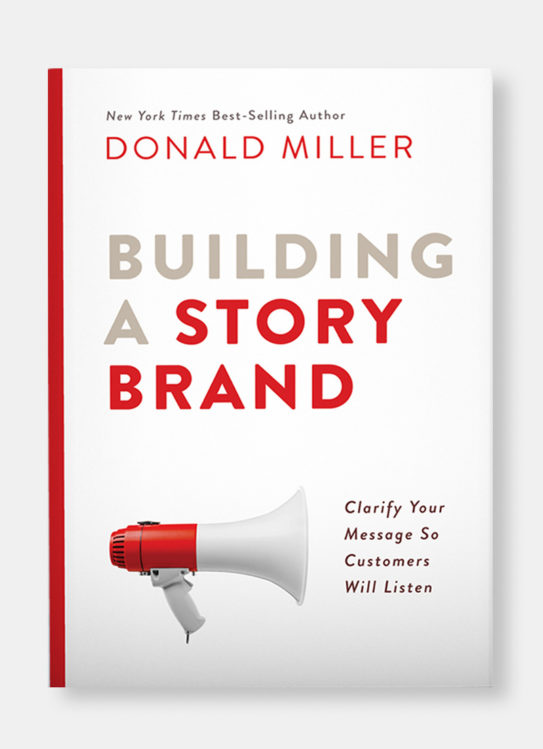Yann Mooney has made a name for himself internationally as a thinker and creative leader. He is a reference in the field of branding. He worked at SID LEE for 20 years, both as creative director and as partner to the agency's most important clients in Canada and abroad. In recent years, his work done while leading highly reputable multidisciplinary creative teams has been recognized by prestigious organizations around the world. Customers who have benefited from his expertise include adidas AG, Absolut, Red Bull, Cirque du Soleil, SAQ, Bell, Vidéotron, Vodafone, Air Canada, St-Hubert, Banque Nationale, exo and Loto-Québec. Yann joined BrandBourg last March as VP Creative and we wanted to give you a proper introduction with this interview.
I would start by what a brand isn’t. A brand is not a name, a logo or a colour palette. These are tools (albeit very important ones) with which we work to tell the story of the brand. A brand therefore has its own story, values, a unique personality, and ways of presenting itself and speaking that stand out. But above all, a brand is a living thing. When developing a brand, we use the same terms as we would to describe people, like the word ‘personality’, for example. I think you should treat a brand as a living entity, like a person. A person with emotions and things to say, who develops strong, lasting and relevant relationships with other humans. A person who has a reason for being, who grows and evolves to stay relevant. A person who gives me experiences, who provides me with something tangible and with whom I will go a long way.
When a brand touches our hearts and shares our values, we stay loyal to it and we are ready to pay $6 for a cup of coffee…

When a brand touches our hearts and shares our values, we stay loyal to it and we are ready to pay $6 for a cup of coffee…
The biggest difference lies in the difficulty of finding truly universal human insights that are not related to a particular culture. We are looking for things that will allow us to develop brand stories and concepts that resonate with a Canadian just as well as a German or Japanese person. It’s a challenging exercise, but when done right, it makes brands stand out and able to separate themselves from the pack.
In one word: to stay relevant. It may seem simplistic when stated like that, but just as an evolving human being, moving from childhood to adolescence to adulthood, a brand must constantly evolve and adapt to remain relevant in the hearts and minds of consumers. To remain relevant, you have to be in harmony, aligned with the moment and the context.
This is an interesting question, and the simplest answer might be: the impact of corporate culture is tremendous. But we could also flip that around and say that the brand can have a tremendous impact on corporate culture. All this to say that brand expression and corporate culture go hand in hand and should be perfectly aligned. Let’s not forget that a brand acts on several fronts and that, in addition to what reaches consumers, the way in which the brand fits in the hearts of employees is just as important.
What is the expected impact of a brand expression platform on a company’s ability to:
Ahhhh, the multiple-choice question! You won’t be surprised that my answer is: d) All of the above. It’s true that brands need to be multifaceted, able to speak to different audiences and bring something unique to them. In my humble opinion, the notion of citizen brand should also be added to this list of answers. Consumers increasingly expect more from this aspect that is sometimes overlooked by brands. If we come back to the idea that a brand is like a person, then the brand must also care about what it contributes to society and the planet. It comes back to relevance, to the need to be connected to the moment and the context.
Since the beginning of lockdown, I have jokingly been saying, without pretense, that while branding may not be an essential service, it is a fundamental service. Yes, I know, these are synonyms. The idea is to emphasize that branding is no less than the foundation of a brand and that its purpose is to provide direction in all expressions, whether in terms of design, advertising or other communication tactics.
Unfortunately, there are few agencies that truly specialize in branding. The discipline is often included in a whole mix of services provided by agencies.
The people are what makes BrandBourg special. Not only by their talents, but also by their diversity of backgrounds and experiences that gives this team a truly unique profile in the market.
The example I like to use to illustrate this point is from a few years ago, when I was in charge of creative on the exo project while working at another agency. The strategy had been developed by Lucie and Pierre from BrandBourg, and Lynne Gagnon was on the client side. Now, with Lynne and I at BrandBourg, we’ve brought together all the parties responsible for carrying the vision of that project to completion and ensuring its implementation. Without this project, I wouldn’t have fallen in love with these people that I respect and admire tremendously, and with whom I want to do great work. I think it was that project that made us want to work together.
I had a feeling that people were at the heart of BrandBourg’s approach, and since I joined the team, that intuition has been confirmed several times.

Our profession has changed a lot in the last few years and this reality of businesses internalizing design is a trend to which we must adapt (we too must remain relevant). Our customers know their brands better than we do and they are well placed to ensure consistency on a daily basis. I’ve seen people of great talent jump to the client side in recent years and contribute to the success of many brands.
I like the idea of co-creation a lot. If our customers know their brand better than we do, we are fortunate enough to have the necessary outside perspective to identify what can be updated or improved. When we manage to bring together both players, client and agency, we quickly reach innovative and relevant solutions that we can implement with greater ease. We’ve done co-creative work a few times with our friends over at PremierTech and we noticed how their teams really took ownership of the projects and how they became the best advocates internally.

Obviously, it’s always satisfying to see your work admired and rewarded by your peers, but these rewards are not necessarily an indicator of a project’s success from a commercial standpoint. We have the responsibility to put our intelligence and talent at the service of our clients first and foremost, to help them to keep developing their brands, increase their profits, stand out and remain relevant. If we can do all of this, there is a good chance that the rewards will come naturally.
I believe it is essential that CPG companies continue to capitalize on the importance of branding. To me, the role of branding and storytelling in CPG is the best way for a brand to differentiate itself and occupy a unique place in people’s hearts. We want to create desirability and earn the loyalty of consumers so that products are not simply considered as commodities that are easily interchangeable based on what’s on sale that week. In this sense, the products of CPG companies are not immune to consumers’ appetite for brand stories that they can identify with and that deeply resonate with them.

Packaging design has its own set of challenges. We need to stand out from our competitors who are right next to us on the same shelves. This shelf war is crucial because consumers often make their choice directly on the spot, unless we manage to create loyalty. The best way for brands to create this loyalty and take a unique place in the hearts of people is to have a story that is conveyed through the packaging. I like to treat packaging design a bit like a billboard, that is, communicating a message and not just information.
This is a very sensitive topic. In the wake of the anti-racist movement that we’re seeing in the United States, we can see the danger of associating with these stereoptypes. What may have been relevant at one time has become irrelevant. In fact, the company that owns Uncle Ben’s recently announced that the time was right to evolve the brand. Pressure from the people will therefore have overthrown this stereotype which conveys values that are outdated, and that’s a good thing. The same will happen to Aunt Jemima and probably to the Washington Redskins in football, the Cleveland Indians in baseball, etc. Brands must be in tune with the times.
As we have seen, the COVID crisis has really accelerated discoveries, transformations and changes in several sectors, but also in terms of our human behaviour and our habits. Consumers are often one step ahead of brands, and there will likely be a larger gap as a result of this crisis. Brands will have to adapt quickly to this new normal in order to reduce or close this consumer gap. Coming back to what I said earlier, I believe that in this context, branding is a fundamental service that helps brands stay relevant.

The Brand Gap : How to Bridge the Distance Between Business Strategy and Design By Marty Neumeir

Building a StoryBrand: Clarify Your Message So Customers Will Listen By Donald Miller
See also “How great leaders inspire action” by Simon Sinek: a Ted Talk that has been viewed over 50 million times.
View more relevant articles